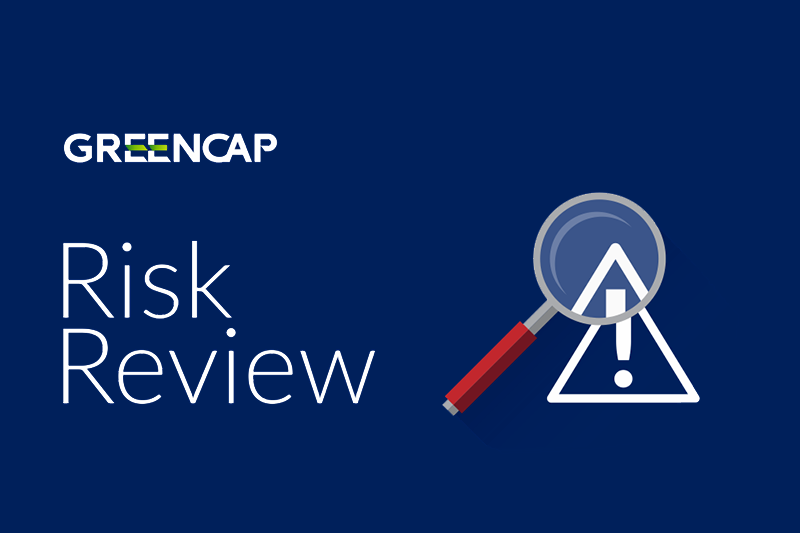News & Insights
Managing Risks Associated with Emergency Management
Planning and preparing the workforce for how to appropriately respond to an emergency is critical for any business or workplace.
Historically, Emergency Management was simply about how to evacuate a building in the event of a fire. This now comprises a much smaller percentage of all the emergency situations which occur on a daily basis across the country.
With the increasing risk of terrorism around the world and the National Terrorism Threat Advisory System now listing the likelihood of an act of terrorism occurring in Australia as PROBABLE, it puts a spotlight on ensuring an effective Emergency Plan is designed and implemented across all workplaces.
Why is an effective Emergency Management Plan important?
In addition to the regulatory compliance requirements (e.g. WHS/OHS Legislation in each state/territory, QLD Building Fire Safety Regulations and AS3745-2010 Requirements), ensuring a safe workplace is provided to workers is critical from both a safety and well-being perspective. It is essential that everyone can be effectively moved to a safe place in an emergency. Mitigating any risk to life which could eventuate also forms a major part of any workplace’s duty of care to its workers.
When considering Emergency Management, remember:
-
The actions taken in the initial minutes of an emergency are critical
-
A prompt and early warning to employees to evacuate, shelter or lock down can save many lives
-
A call for help to public emergency services that provides full and accurate information will help the dispatcher send the right responders and equipment
-
Workers trained to administer First Aid or perform CPR can make the difference between life and death
-
Action by workers with knowledge of relevant building and process systems can help minimise damage to the facility and the environment
Recent Case Study - Florida School Shooting
On 14 February 2018, 17 people were shot dead and 19 severely injured in the US by a 19-year-old ex-school student. The shooter wore a gas mask as he entered the school carrying a rifle, ammunition cartridges and smoke grenades. He then triggered a fire alarm, prompting students and staff to exit from their classrooms into hallways.
Students and teachers responded as trained when the fire alarm sounded, evacuating toward school exits, only to run into deadly gunfire.
There are a large number of scenarios in which workplaces are not being effectively prepared to respond in the event of simultaneous emergencies.
In the above case study, standard training was followed – which is to evacuate during fire alarms but to lock down or take shelter-in-place during an active shooter event. There was confusion when a fire alarm sounded and gun shots were heard. Should people for the exits or take shelter-in-place in the classrooms?
Through a carefully planned emergency response, appropriate training and effective evacuation practices, more lives can be saved and the risk of loss of life can be significantly reduced. Having an effective Emergency Plan also minimises the exposure of litigation in the unlikely event of an emergency.

What is Greencap’s advice?
There are three key steps to establishing a practical approach, whereby each party understands their roles, responsibilities and accountabilities in an emergency situation.
Step 1: Review existing Emergency Management Plan
-
Evaluate the effectiveness of your current Emergency Plan and the compliance level of your evacuation drills and Emergency Control Organisation (ECO) training
-
Ensure a sufficient number of wardens are in place in your workplace and that they have been trained recently as a team to respond to an emergency
-
Ascertain if the wardens are trained to deal with multiple or simultaneous emergencies and, if so, whether these been practiced
-
Determine if you have a Chief Warden for the building and, if so, they suitably skilled and trained
-
Check all your wardens and staff know the Assembly Area and that you have AS3745:2010-compliant evacuation diagrams displayed
-
Identify any gaps in your plan where emergency management practices must be improved
The outcome of the review should be an Action Plan setting out priorities, whilst allocating responsibilities and timelines.
Step 2: Update or Develop an effective Emergency Management Plan
Using the information gathered in the above review, the Emergency Management Plan should be updated. Whilst there are minimum standards established under the various state-based WHS/OHS Regulations, QLD Building Fire Safety Regulations and AS3745-2010, additional tasks may be required to ensure the plan is effectively implemented.
This may be via more tailored/bespoke training, training more frequently for certain roles (e.g. ECO, Wardens) or more practice/simulation exercises to ensure that, in the event of an emergency, the team is comfortable with their roles and responsibilities.
In the above-mentioned situation in Florida, there was confusion when both a fire alarm sounded (occupants trained to evacuate) and gun shots were heard (occupants trained to shelter-in-place). The ability of the Chief Warden to have readily available information and assess the situation is critical. This then needs to be communicated to the various other parts of the ECO to ensure the team is working together to minimise the risks to the health and safety of the occupants.
An effective Emergency Management Plan will include a range of typical documents or systems relating to emergency management. These may include (but are not limited to):
-
Compliant Emergency Response Procedures manual
-
Emergency Control Organisation (ECO) or warden training
-
Chief Warden and Deputy Chief Warden training
-
Evacuation or Lock-down exercise(s)
-
Compliant Emergency Evacuation Diagrams
-
Emergency Planning Committee (Governance)
-
Effective Emergency Management framework in line with Crisis Management and Business Continuity frameworks
Step 3: Implementation
Implementing your new plan or processes may be a challenge and will typically involve:
-
Formation and briefing of ECO team and staff on the updated Emergency Plan to manage an emergency response
-
Training to ensure that your ECO has the knowledge and skills to effectively respond to an emergency*
-
Checking training is specific to the risk profile of the organisation and/or property
-
Monitoring, reviewing and updating the response procedures in line with changing threat levels
-
Reviewing the effectiveness of the implementation program and making any necessary adjustments
*Whilst there is currently a minimum expectation under Australian Standard AS3745:2010, pending the complexity of your property and the risk profile, more frequent and detailed training may be required to ensure the effective implementation of the emergency plan.
Gaurav Bhalla (TrimEVAC National Manager – Business Development & Key Accounts) highlights a key issue in relation to over-arching frameworks and shared responsibilities:
“We deal with a number of clients across multiple sectors. Emergency Management roles and responsibilities often sit in varied internal departments (and often have shared ownership/responsibility) – from Human Resources to WHS, Property Management Department or Security. This often creates confusion and possibly competing priorities. Having an over-arching framework is the key to defining who is responsible and accountable, but also who needs to be consulted/informed. This framework needs to be quite specific and tailored to the organisation as the framework for one organisation may not be suitable for another organisation.”
Greencap’s specialised Emergency Management and Training company TrimEVAC has assisted many organisations, both public and private, operating across a wide range of industries since 1987 in managing their Emergency Management risks.
Now one of Australia’s leading Fire Emergency Management and Response Training companies, TrimEVAC conducts detailed gap analyses and risk profiling to ensure our training is both tailored to our clients’ needs and also highly effective in managing the risks associated with an emergency situation.
Please contact the TrimEVAC Team for further information or assistance in managing or updating your Emergency Management Plan.
The information in this material is not intended to provide, and should not be relied upon, for legal or professional advice and is subject to change.
This material provides general information only and does not take into account your particular needs or circumstances. Before making any decisions, you should assess whether this material is appropriate for you and obtain legal advice tailored to you having regard to your particular needs and circumstances.
Greencap Pty Ltd (Greencap), its officers, employees and agents believe that the information in this material and the sources on which the information is based (which may be sourced from third parties) are correct as at the date of publication. While every care has been taken in the preparation of this material, no warranty of accuracy or reliability is given and no responsibility for this information is accepted by Greencap, its officers, employees or agents. Except where contrary to law, Greencap excludes all liability for this information.
If this material contains links to third party websites, Greencap does not control and is not responsible for the information contained within these websites. None of these links imply Greencap’s support, endorsement or recommendation of any other company, product or service.



Greencap acknowledges the Traditional Owners of Country throughout Australia and recognises their continuing connection to land, waters and culture. We pay our respects to their Elders past, present and emerging.



